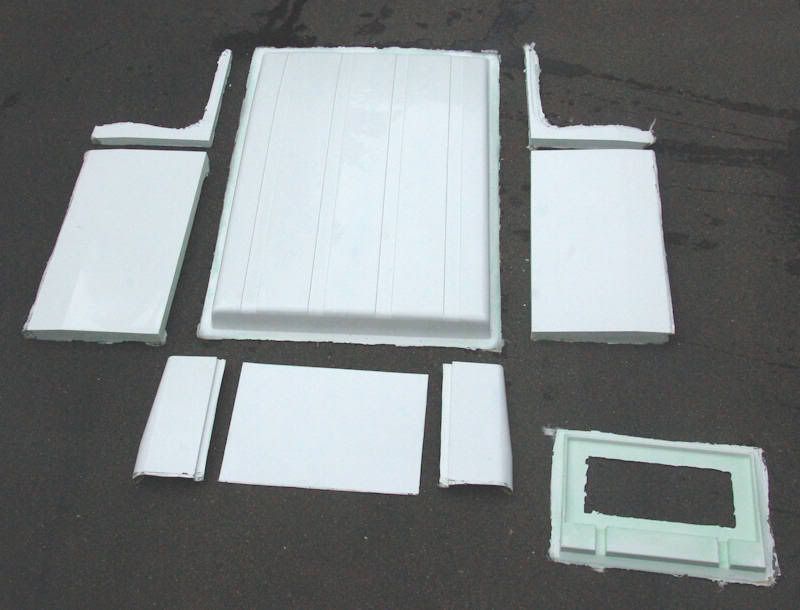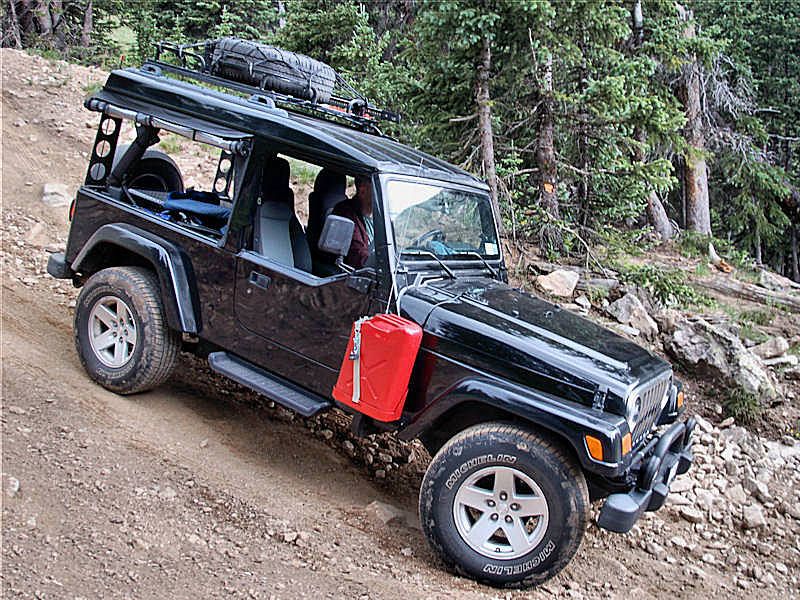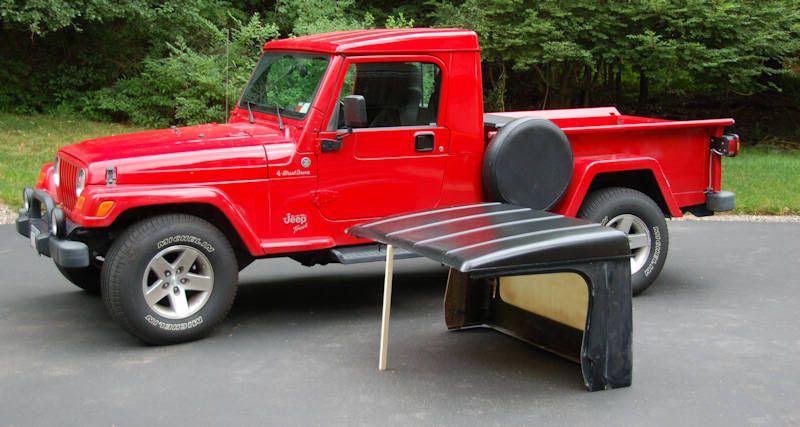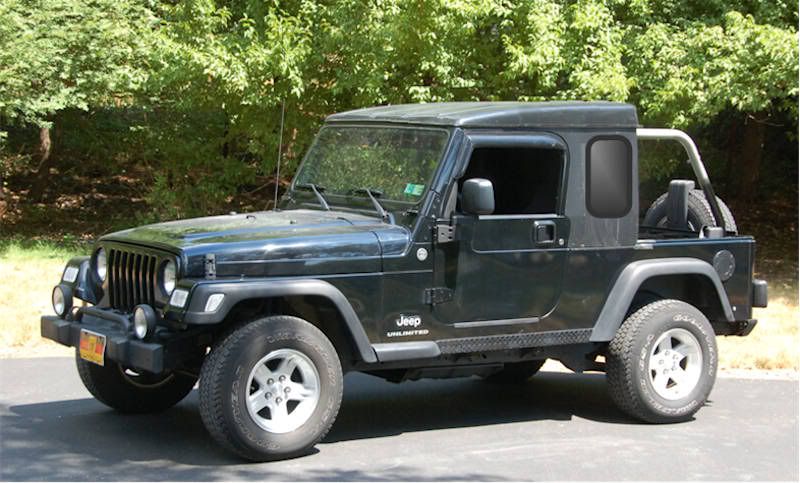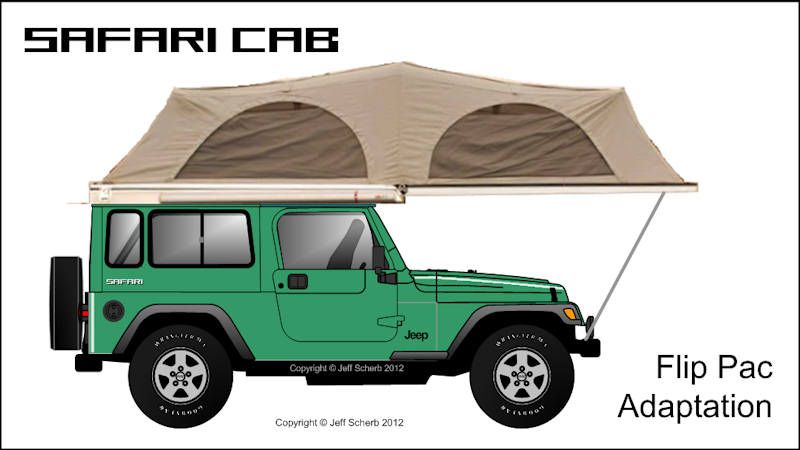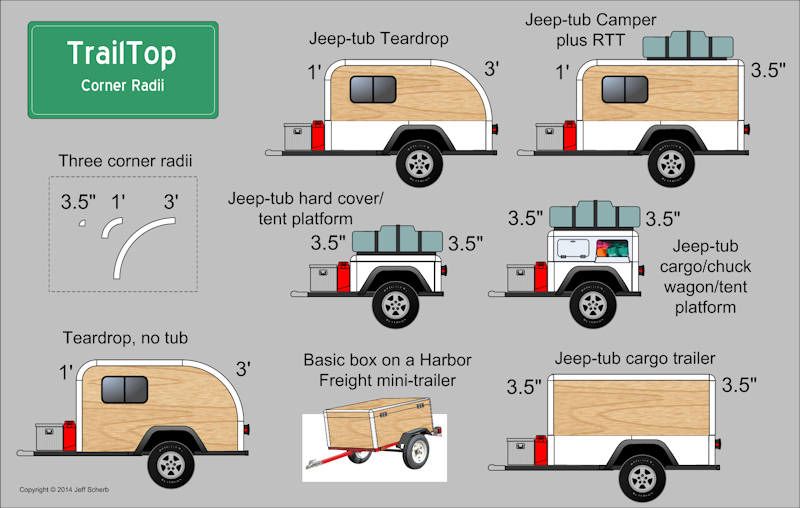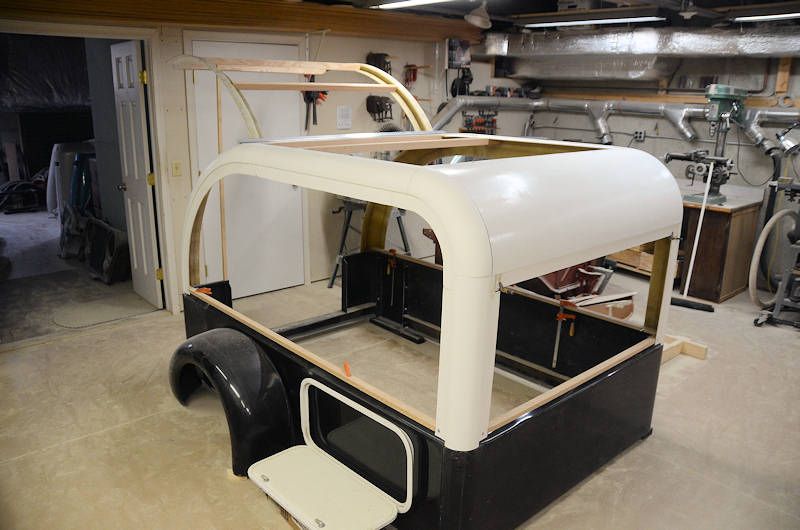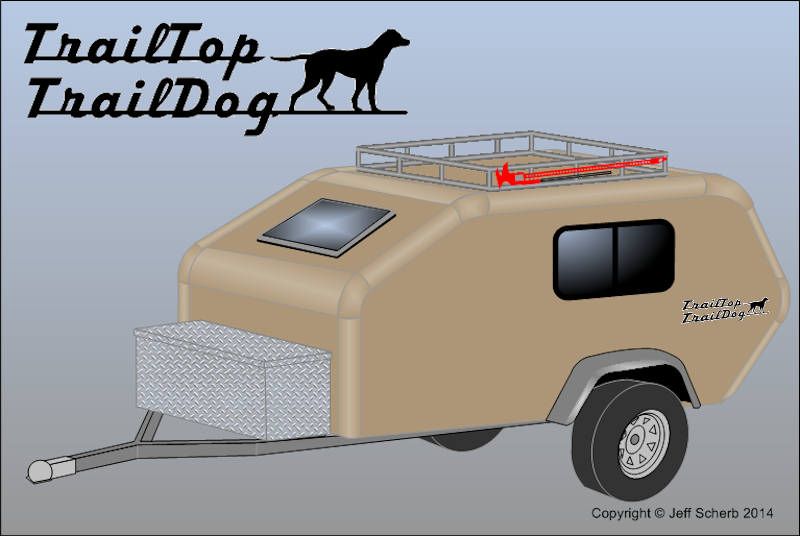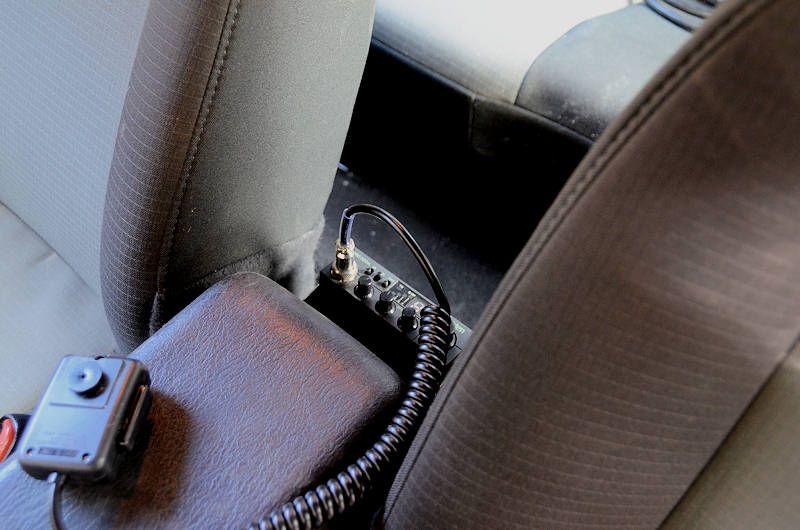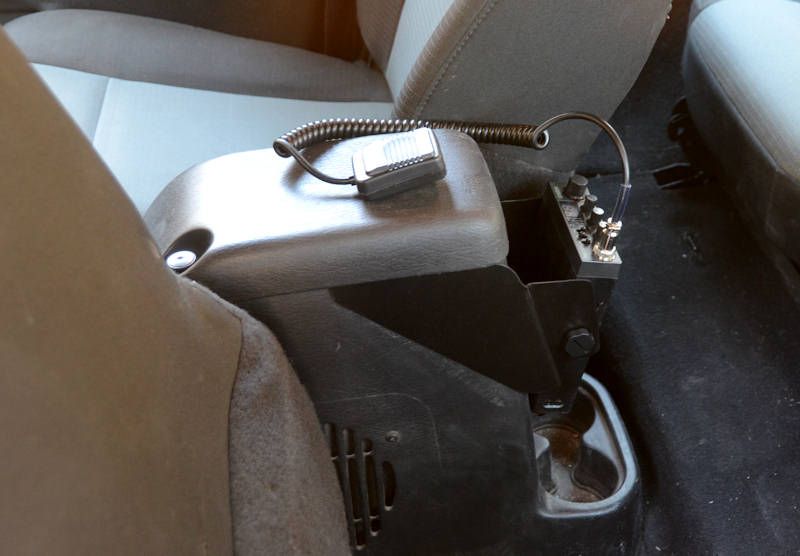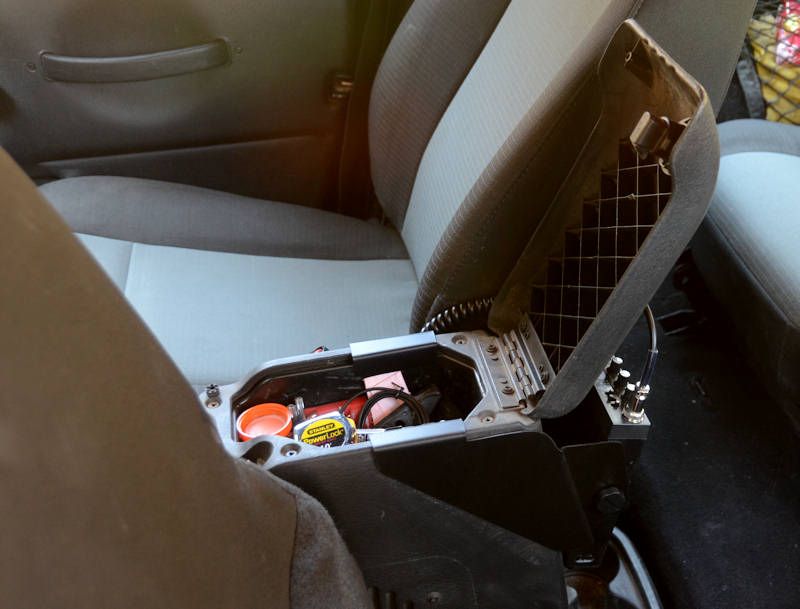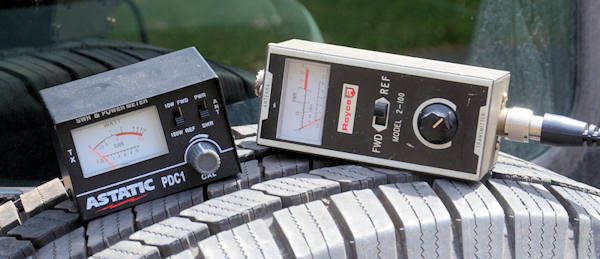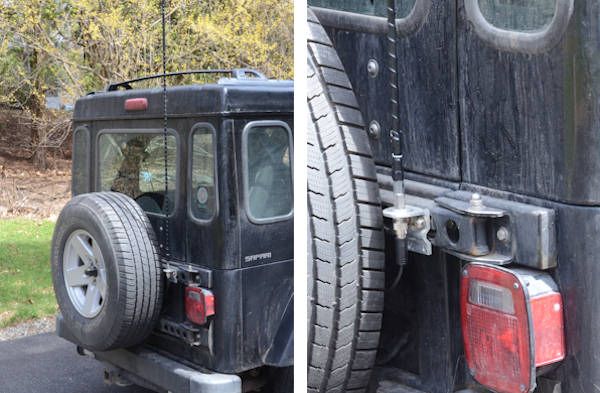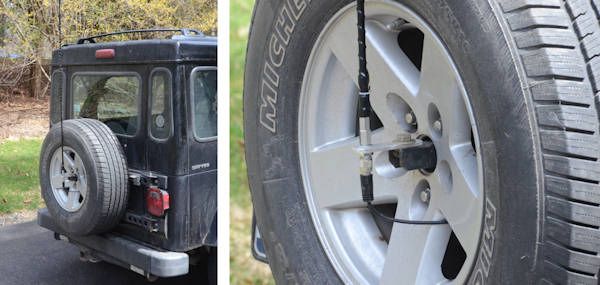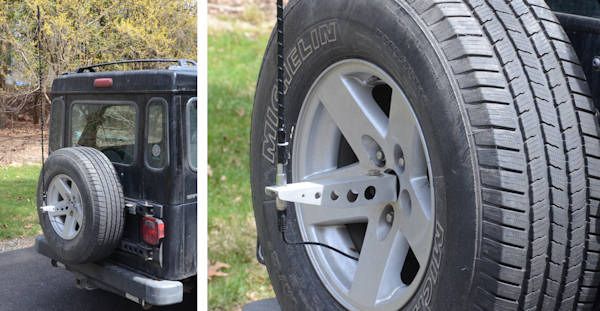As part of my CB installation I've been doing some experimenting with antenna locations to get the lowest SWR reading. In the process I've learned a few things I thought would be worth passing along.
Background info: SWR ("standing wave ratio") is a measurement of how much transmitter power goes out the antenna vs. how much is "reflected back" due to antenna mistuning, antenna location or other factors. SWR is measured with an SWR meter, which goes between the transmitter and antenna. The closer the reading is to 1, the more power is leaving the antenna; up to 2.0 or so the CB will transmit ok, and above that there's a problem that needs to be solved.
SWR meters are pictured below, I've got two because I wasn't 100% convinced that the first one I had was accurate.
A 1.0 SWR means that all power is going out the antenna, and is hard to achieve in the real world due to losses in cables, etc. A 1.5 SWR means that 97% of the power is going out the antenna and is just fine in the real world; a 2.0 means that 89% of the power is transmitted - very usable, allthough maximum range won't be achieved.
Now to my real world tests...
I've read that the optimum cable length (between the CB and the antenna) for most installations is 18'. Initially I had a 10' cable, because Jeep are short and I didn't need that much cable to reach between the antenna and the CB. The best SWR reading I got with the 10' cable was 2.4; switching from the 10' to an 18' cable reduced the SWR to 1.9. Didn't really expect that just changing the cable length would make that much difference, but both meters confirmed it.
My goal was a reading near 1.5, so I still had more work to do. Another piece of common advice is to avoid having the antenna near a parallel "reflecting surface" (more on that in a moment).
My initial location was right on the Exogate hinge, SWR reading about 1.9:
That's usable, but only 90 percent of the transmitter power going out the antenna. Good enough for trail runs because the leader and tailgunner would always be withing range, and probably good enough for basic highway use, say to find out why the traffic is stopped up ahead, but not good enough for use on the Dalton Highway in Alaska where I might need maximum range in an emergency.
Opening the barn door moved the antenna a little further from the Jeep, so next I tried mounting the antenna in the center of the spare, using the mounting stud I designed for the jerry can mount, plus an adapter for the antenna:
SWR there was 1.5 (97% power out). Perfectly fine for almost all situations. Opening the barn door reduced the SWR even further, so I decided to try another mounting location a little further from the Jeep. I made up an extension bracket:
SWR was 1.2 in this extended location, which means 99.2% power output.
And if I open the barn door all the way, which puts the antenna a little bit further away from the Jeep, the SWR goes down to below 1.1.
So moving the antenna away from the Jeep improves the SWR significantly. I don't know what the "reflecting surface" is that's causing the problem - it could be the hardtop, although I wouldn't have expected fiberglass to reflect too much radio transmission, but it could also be the roll bars - the vertical parts are more-or-less parallel with the antenna and they are grounded. I'm not a transmitter engineer, so I don't know the exact cause, but I was able to find an optimal location through testing, so all is well.
I only run with the CB in the Jeep for trail runs, occasional long highway trips, and of course I'll use it on the Alaska trip. I don't need the extended mount for all circumstances, so I can pick among the mounts pictured above for the situation I plan to be in.

